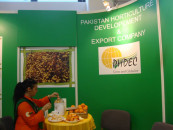Repercussions of Ukraine conflict
If war prolongs, commodity prices rise further, hyperinflation may engulf Pakistan

Neither Ukraine nor Russia is a significant bilateral trade partner of Pakistan – in 2020 together, they accounted for less than $1 billion out of our total trade of about $68 billion. Nevertheless, the conflict would have a significant effect on our economy. The reason is that export restrictions on Russia and supply disruptions from Ukraine are seriously impacting global energy and food prices. With its existing energy and food insecurity, Pakistan is more vulnerable to the adverse impact of these factors than other regional countries.
Since the Russian invasion of Ukraine, oil prices have been soaring. On March 7, 2022, the weighted average of the OPEC basket oil prices, which serves as a reference point, jumped to $126.51 per barrel. Although since then the price has dropped to around $100 per barrel, it is still the highest since 2014.
Even before the conflict began, in the first eight months of current financial year, from July 2021 to February 2022, Pakistan’s import of petroleum had jumped from $6.5 billion to $13 billion, or 100%, compared to the corresponding period of last year. If the price stays around this level, the import bill for oil would likely surpass $20 billion or more than double that of the previous year. Similarly, food items figure high in our import bill. In 2020-21, their imports amounted to $8 billion, or about 16% of the total.
Although the food import bill has not shown a similar escalation as oil, its increase during the past eight months was also significant, from $5.3 billion to $6.4 billion, or over 20%. Among food items relevant to Pakistan are wheat and palm oil. The conflict would seriously disrupt wheat supply since Russia and Ukraine together account for over 30% of the world’s wheat exports. On March 7, 2022, wheat prices in international markets reached the highestever level, although they have eased a little since then.
Fortunately, due to Pakistan’s record wheat crop in 2021 and considerable imports (all sourced from Ukraine and Russia), this commodity’s prices have been relatively stable. There were also favourable prospects for the 2022 crop to be harvested from April onwards but due to shortage of fertiliser, the expected size of the crop may not materialise. In order to build stocks and avoid shortages, the government is planning to import about 2 million tons of wheat. But it would not be easy this year as Russia has already announced suspension of all grain exports until August 2022 to protect domestic food markets. Ukraine expects wheat plantations to decrease by 39%, or 4.7 million hectares, this spring.
This situation will be further compounded by the prevailing drought conditions in North America. As far as palm oil is concerned, due to 50% increase in prices this year, our imports during the last eight months jumped from $1.58 billion to $2.44 billion, or 53%. Pakistan is the world’s fourth-largest importer of this commodity, and refined palm oil accounts for 98% of Pakistan’s total edible oil imports.
Although palm oil is sourced entirely from Indonesia and Malaysia, due to the disruption of sunflower seeds supply from Ukraine and Russia, prices of other sources of edible oil are going up. As with petroleum, Pakistan has no choice but to import these essential products. Despite efforts for import substitution through local production, Pakistan’s oilseed production has declined. Production of cotton, hence cottonseed, has been falling over the years.
Moreover, due to competition from major crops (ie, wheat and sugarcane, which are provided guaranteed support prices by the government), there has not been any shift to oilseed production. Even before the price escalation in these commodities, inflation in Pakistan has been high throughout the last three years. It reached a record high of 13% in January 2022. If the war prolongs and the commodity prices escalate further, we may soon see hyperinflation engulfing the country. Besides bringing misery to the people, higher inflation in Pakistan compared to other competing countries is further eroding our competitiveness and exports.
Pakistan may soon face fuel, food and financial crises with all these difficulties. Sri Lanka is currently going through this crunch. Huge crowds have been protesting against shortages and the government’s incompetence in handling them. Let’s hope we can avoid such a situation. Our best hope should be for an early end to the Ukraine crisis and the world regaining some normality.
THE WRITER HAS SERVED AS PAKISTAN’S AMBASSADOR TO WTO AND FAO’S REPRESENTATIVE TO THE UNITED NATIONS AT GENEVA



















COMMENTS
Comments are moderated and generally will be posted if they are on-topic and not abusive.
For more information, please see our Comments FAQ